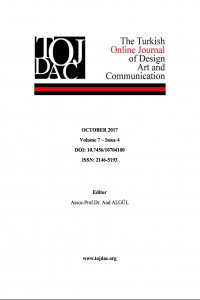Öz
Even though cinema studies, usually
focusing on films, the audience has been attracted to the attention of
researchers since the beginning of these studies. However, in recent years the
number of studies on the audience has been increasing steadily. While early
cinema studies has focused on the influence of films on the audience, the
experience of cinemagoing has recently become a focus. This article is based on
oral history interviews conducted in Istanbul, Ankara, Antalya and Kocaeli
within the scope of the TUBITAK Project entitled "Cinemagoing as a
Cultural and Social Practice". In the article, through the fifty
interviews with female spectators who went to cinema in Turkey in the 1960s and
'70s, dynamics that played a role in the women's experience of cinemagoing and
the narration styles of the experience of cinemagoing were analyzed
thematically and discursively. The narratives of women spectators and their
analyzes emphasize that women's understanding of cinema is heterogeneous and
multidimensional and have shown that marriage is a significant threshold for
women's experience in cinemagoing and is used as a strategy act of going to
cinema against the reality of everyday
life.
Anahtar Kelimeler
cinemagoing spectator oral history woman narratives of cinemagoing
Kaynakça
- Akbulut, Hasan (2016). “Sinemaya Gitmek ve Seyir: Bir Sözlü Tarih Çalışması”, Deniz Bayrakdar (Preb. by), Türk Film Araştırmalarında Yeni Yönelimler 12. İstanbul: Bağlam, p. 231-252.
- Casetti, Francesco (2009). Inside the Gaze: The Fiction Film and Its Spectator. Blomington, Indianapolis: Indiana University Pres. Ellis, John (1992). Visible Fictions: Cinema, Television, Video. Routledge, Londra.
- Erdoğan, Nezih (2001). “Üç Seyirci: Popüler Eğlence Biçimlerinin Alımlanması Üzerine”, Deniz Derman (Ed.), Türk Film Araştırmalarında Yeni Yönelimler 2. İstanbul: Bağlam, p. 219-230.
- Ertaylan, Arzu (2013). “Yeşilçam Döneminde Van’ın Sinema Kültürü”, Turkish Studies: International Periodical For The Languages, Literature and History of Turkish or Turkic, 8 (8): 1839-1857.
- Esen, Kıvanç (2012). “Perde ve Sahne Dergisi Çerçevesinde (1941-1945) Erken Cumhuriyet Dönemi Türkiye’sinde Sinema Algısı”, Tarih Okulu, Sonbahar-Kış (13): 69-88.
- Gripsrude, Jostein (2011). “Sinema İzleyicileri”, Murat İri (Trans. ve Ed.), Sinema Araştırmaları. İstanbul: Derin, p. 307-324.
- Sorlin, Pierre (2004). “Eğlence Tarihinde Sinema”, Battal Odabaşı (Trans.), Nurçay Türkoğlu et. al. (Ed.), Kentte Sinema Sinemada Kent. İstanbul: Yenihayat, p. 17-24.
- Stacey, Jackie (1994). Star Gazing: Holywood Cinema and Female Spectatoship. Routledge, London and NY.
- Gledhill, Christine (2000). “Rethinking Genre”, C. Gledhill and L. Williams (Ed.), Reinventing Film Studies. London: Arnold, p.221-243.
- Gledhill, Christine (1992). Home is Where the Heart Is: Studies in Melodrama and the Woman’s Film. London: BFI.
- Jarvie, Ian Charles (1970). Towards a Sociology of The Cinema: The Comparative Essay on Structure Functioning of a Major Entertainment Industry. Routledge: London and New York.
- Kaya Mutlu, Dilek (2005). The Midnight Express Phenomenon: The International Reception of the film Midnight Express. İstanbul: The Isis Press.
- Kırel, Serpil (2005). Yeşilçam: Öykü Sineması. Babil: İstanbul.
- Kemper, Tomas (2003). “Received Visdom: Three Reception Studies”, Jump Cut, 46. www.ejumpcut.org/currentissue/kemper.staiger/kemper1,2,3.html. Access date: 18 September 2003.
- Kuhn, Anette (2002). An Everyday Magic: Cinema and Cultural Memory. London, New York: I.B. Tauris.
- Kuhn, Anette (2011). “What do with Cinema Memory?”, Richard Maltby, Daniel Biltereyst, Philippe Meers (Ed.) Explorations in New Cinema History: Approaches and Case Studies, Wiley & Blackwell: Oxford, p. 85-97.
- Mayne, Judith (1993). Cinema and Spectatorship. London, New York: Routledge.
- Moores, Shaun (1995). Interpreting Audiences. London: Sage.
- Mutlu, Erol (1995). İletişim Sözlüğü. Ankara: Ark.
- Öztürk, Serdar (2013). “Türkiye’de Sinema Mekânlarını Sözlü Tarih Üzerinden Çalışmak”, Milli Folklor 25 (98): 19-31.
- Taş Öz, Perihan (2012). “Pelikülden Dijitale Sinemada Seyir Kültürü ve Seyircinin Değişen Konumu”, TOJDAC: The Turkish Online Journal of Design, Art and Communication, April, 2 (2), 65-73.
- Staiger, Janet (2000). Perverse Spectators: The Practices of Film Reception. New York: New York University Press.
- Interviews Yasemin Yalın (1957, İstanbul), 23.11.2016, İstanbul. Sebahat Adalar (1954, Adana), 5.6.2016, İstanbul. Hatice Erdoğan (1951), Sivas, 28.10.2016, Ankara. Gönül Hatay Eren (1937), Konya. 31.8.2016, Ankara. Ayfer Çekiç (1950, Eskişehir), 04.11.2016, İstanbul. Sebahat Karaboğa (1931, Çanakkale), 23.9.1931, Kocaeli. Hacer Çelik (1932, İstanbul) 28.5.2016, İstanbul. Şehriban Özdemir (1953, Antalya), 4.11.2016, Antalya. Suna Yılmaz (1957, Antalya), 3.12.2016, Antalya. Canan Özgür (1955, Ankara), 17.8.2016, Ankara. Gülşen Tezel (1947, Mersin), 24.11.2016, Antalya. Meryem Oskay (1950, Antalya), 3.11.2106, Antalya. Sevinç Tunalı (1944, Sinop), 1.7.1944, Kocaeli. Necla Oktay (1956, İstanbul), 20.5.2016, İstanbul. Hülya Avkın (1955, Gaziantep), 12.12.2016, İstanbul.
Ayrıntılar
| Birincil Dil | İngilizce |
|---|---|
| Bölüm | Makaleler |
| Yazarlar | |
| Yayımlanma Tarihi | 1 Ekim 2017 |
| Gönderilme Tarihi | 10 Haziran 2017 |
| Kabul Tarihi | 7 Temmuz 2017 |
| Yayımlandığı Sayı | Yıl 2017 Cilt: 7 Sayı: 4 |
Cited By
Yeni Sinema Tarih Yazımına Bir Katkı: Yeşilçam Döneminde Malatya’da Seyir ve Seyirci
İletişim Kuram ve Araştırma Dergisi
https://doi.org/10.47998/ikad.1138877
ESKİ SİNEMA SALONLARI VE İZLEYİCİ DENEYİMLERİ ÜZERİNE BİR SÖZLÜ TARİH ÇALIŞMASI
sinecine: Sinema Araştırmaları Dergisi
https://doi.org/10.32001/sinecine.887523
"BENİM YERİM"DEN "YOK-YERLERE": İSTANBUL'DA GÜNCEL SEYİR DENEYİMİNE DAİR SALON-İÇİ MANZARALAR
sinecine: Sinema Araştırmaları Dergisi
https://doi.org/10.32001/sinecine.742896
All site content, except where otherwise noted, is licensed under a Creative Common Attribution Licence. (CC-BY-NC 4.0)



